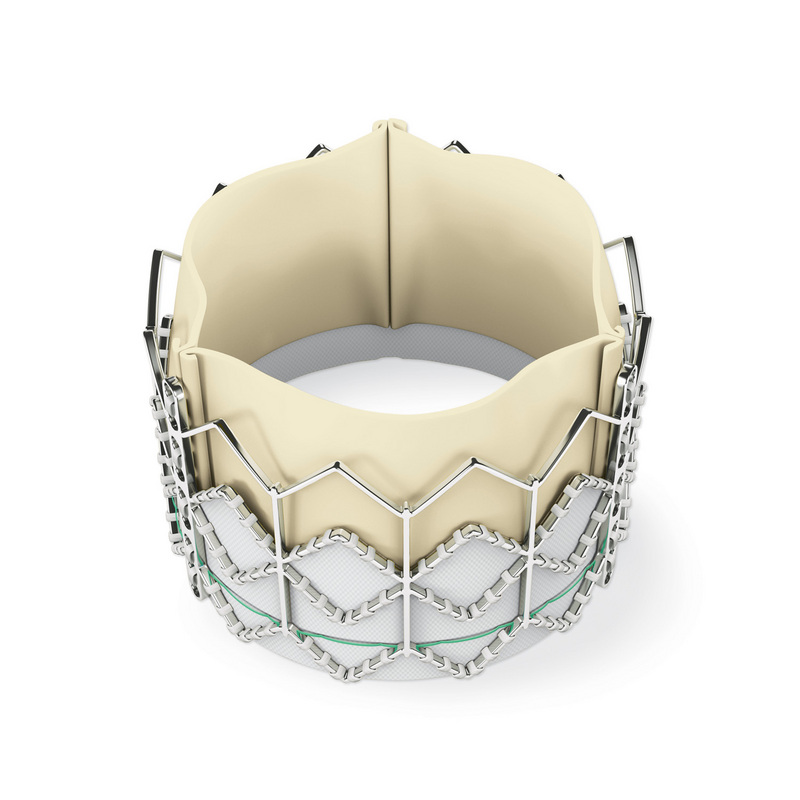
Transcatheter aortic valve replacement (TAVR) is a therapy proposed “as the standard of care for symptomatic patients with aortic stenosis (AS) who do not have reasonable surgical alternatives” in the recent report of the 2 year outcomes from the Placement of AoRTic TraNscathetER Valve (PARTNER) trial which compared TAVR to standard medical therapy. Proponents of TAVR suggest that this procedure provides a non-surgical alternate intervention for frail elderly patients who have life-limiting, symptomatic AS. Geriatric and palliative care practitioners need a working understanding of the potential risks, benefits and burdens of TAVR, especially for vulnerable older adults with multimorbidity.
In a recent geriatrics journal club, we summarized the 1 year and 2 year outcomes from the PARTNER trial as follows:
Of 3105 patients screened, 12% (358 patients) were randomized to transfemoral TAVR vs Standard Rx. In Standard Rx, 82.3% underwent balloon valvuloplasty. This efficacy trial was funded by Edwards Lifesciences, the maker of the SAPIEN heart-valve system used in the study. Mean age was 83. Despite randomization, the Standard Rx group had significantly more COPD, atrial fibrillation, and fraility.
Key results:
- Death from any cause at 2 years was lower in the TAVR group (TAVR 43.3% vs Standard Rx 68.0%). Since the absolute risk reduction was 24.7%, four TAVR procedures would prevent one death over 2 years.
- Complications in the TAVR group included increased rates of stroke (8.3% increased risk at 2 yrs), major vascular complications (14.6% at 1 yr), and major bleeding (11.1% at 1 yr) compared to Standard Rx.
- Medical care utilization by Standard Rx included increased rates of valve-related rehospitalization (37.5% increased rate at 2 yrs), balloon aortic valvuloplasty (82.5% at 2 yrs) and aortic valve replacement (8.0% at 2 yrs) compared to the TAVR group.
- TAVR recipients had significantly improved NYHA class and greater median number of days alive and out of the hospital (TAVR 699 days vs Standard Rx 355 days). 6 minute walk distance was noted to be improved (data incomplete).
- Patients with greater surgical risk based on the Society of Thoracic Surgeons (STS) Risk Score 15% who underwent TAVR did not have a significant mortality benefit.
How might the results of the PARTNER trial apply to frail older adults with multimorbidity?
As with any efficacy trial, we first ask how similar our patient is to the trial participant. The PARTNER trial included only 12% of those screened. Key exclusions were patients with coronary disease requiring treatment and severe peripheral vascular disease. While the TAVR group showed an overall mortality benefit, the TAVR group randomly had less COPD and frailty. There was diminished benefit after TAVR for patients with greater surgical risk based on the STS score. Predictors of 2 yr mortality after TAVR include prior stroke [HR 2.99 (95% CI 1.19 to 7.51)] and O2-dependent COPD [HR 1.69 (95% CI 1.05 to 2.73)]. TAVR was associated with higher rates of stroke, bleeding and vascular complications. A recent BMJ review critiquing TAVR and specifically the PARTNER trial noted that “the PARTNER trial seems to have important problems, the most relevant being publication bias and lack of data transparency, unbalanced patient characteristics, and incompletely declared conflicts of interest.”
From a geriatrics and palliative care perspective, we still need more information regarding the impact of TAVR on essential clinical measures such as functional status, health-related quality of life, symptoms, post-acute care utilization, and which aspects of frailty might be reversible. An analysis of 1 year outcomes after TAVR vs Standard Rx reported that health status was improved after TAVR compared to Standard Rx. I wonder how gait speed, cognitive impairment, depression, falls and other issues important to seniors are affected.
Thus, in real-world situations, I find it difficult to know what benefits of TAVR I can expect, and for which patients. Will my patient with multimorbidity receive the significant mortality benefit and symptomatic improvement? As with left ventricular assist devices (LVADs) for advanced heart failure, we are again faced with technology that may reverse some aspects of frailty, but we don’t know which parts of frailty. Additionally, even TAVR in the clinical trial setting had a sobering 43% absolute mortality at 2 years. From my perspective, there is a need to discuss goals of care, quality of life preferences, and expectations before a TAVR is performed.
What do you think: Should patients being considered for TAVR be routinely referred for palliative care consultation? Has the availability of TAVR impacted your geriatrics or palliative care practice? Have you seen significant functional or quality of life improvements in your patients after TAVR?
Post-script: Estimated costs from the PARTNER trial
Procedure: $42 806
Hospitalization: $78 542
Follow-up through 12 months: $29 289 (TAVR); $53 621 (Standard care)
Cumulative 1-year costs: $106 076 (TAVR); $53 621 (Standard care)
By: Hillary Lum (@hdaylum)



